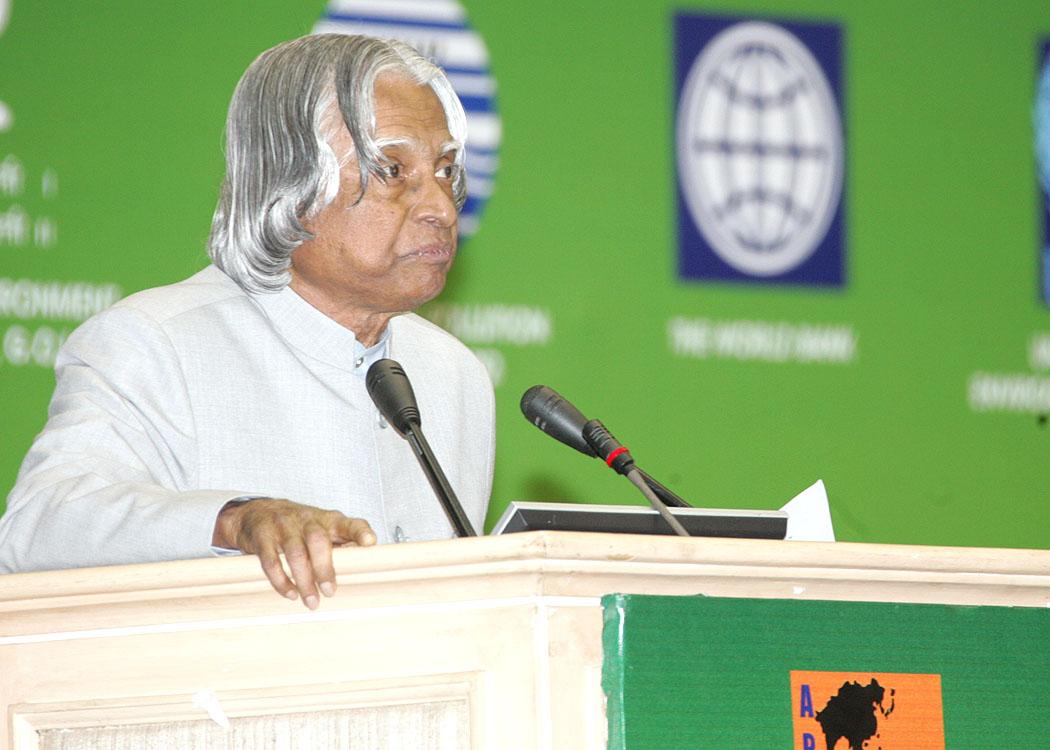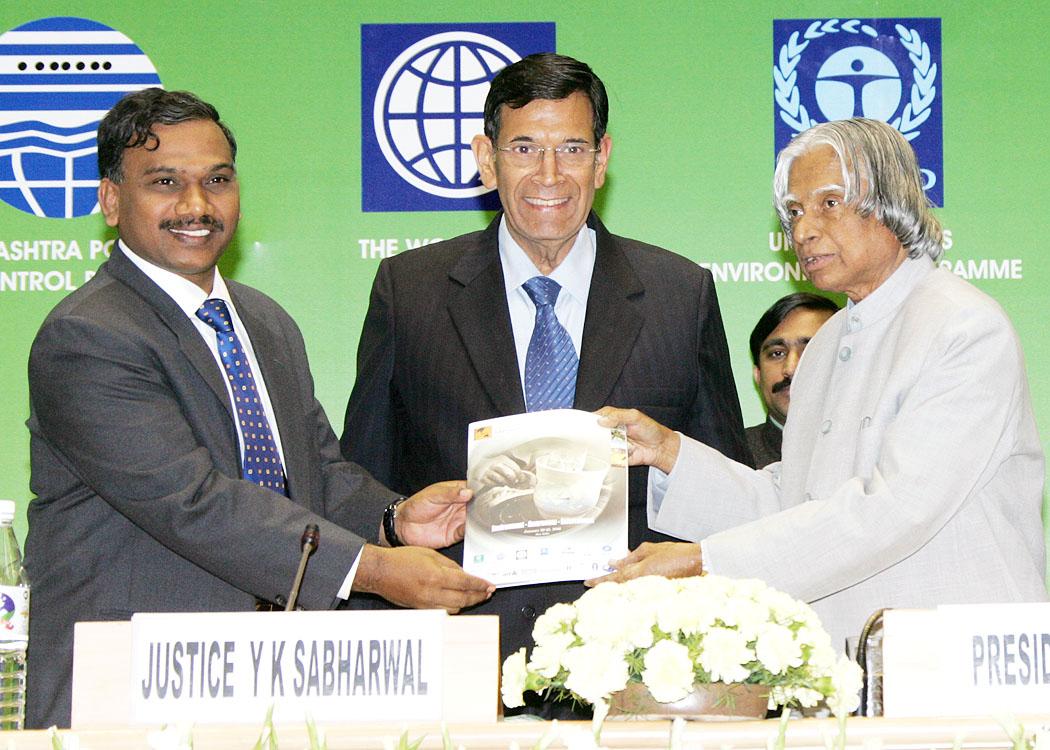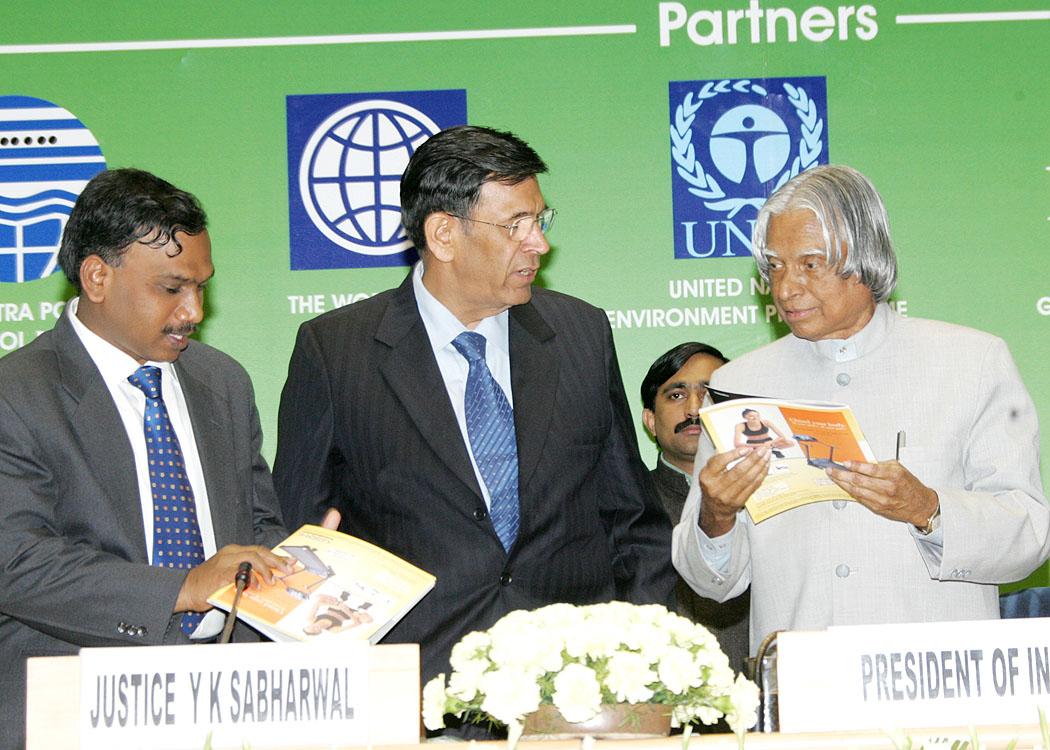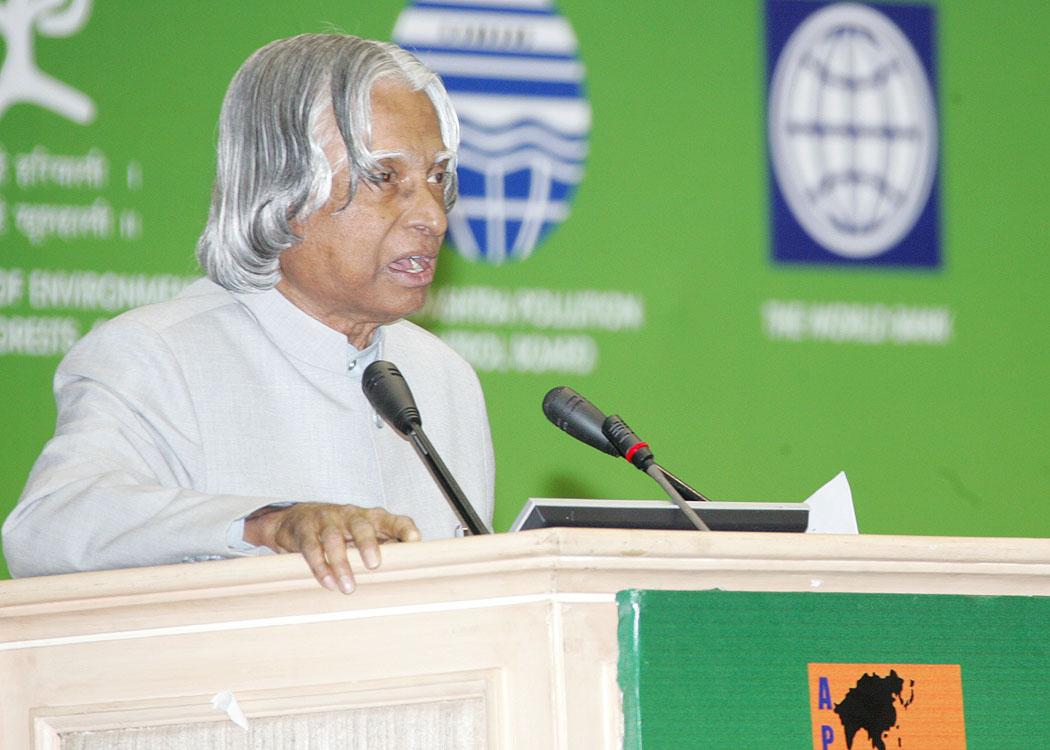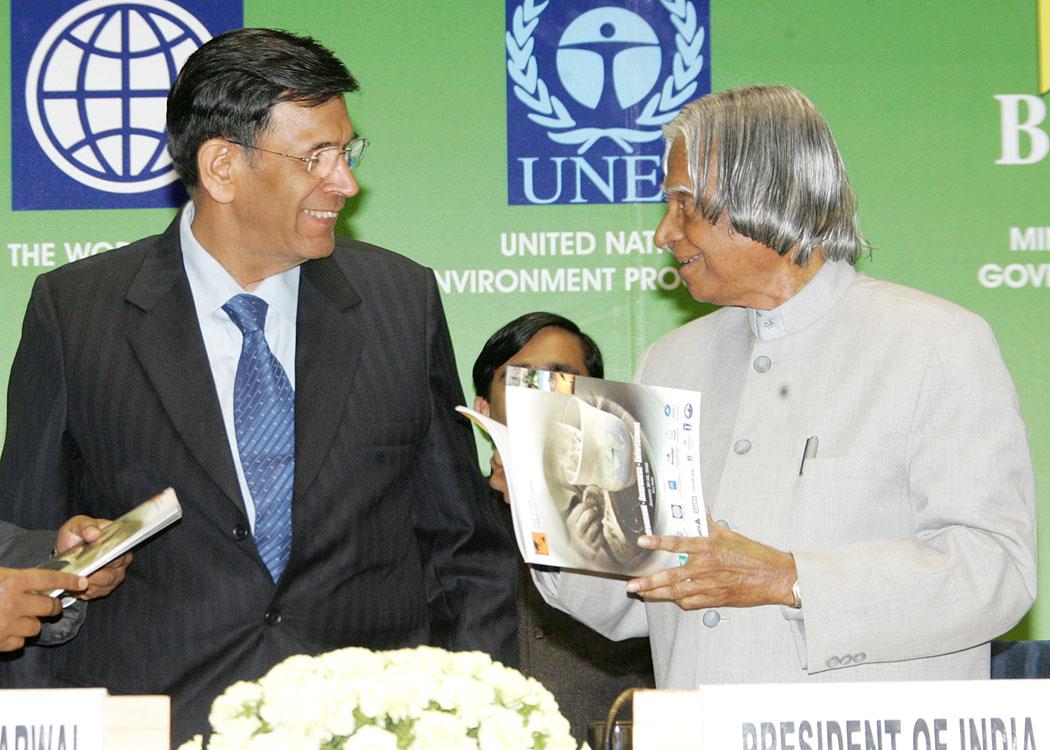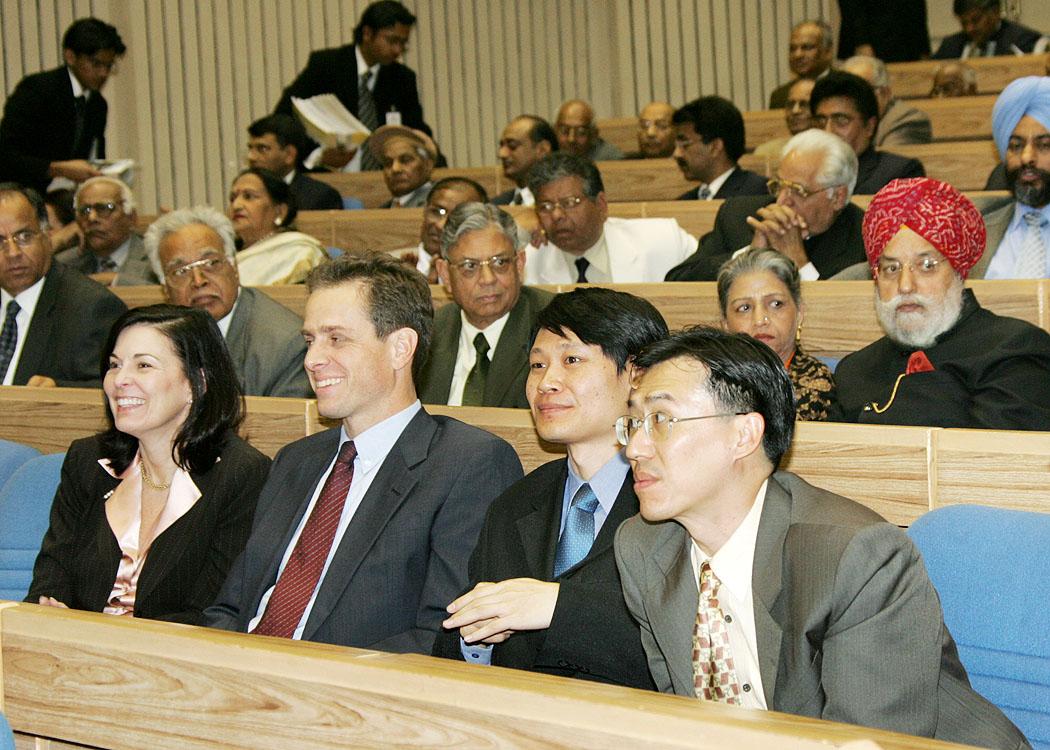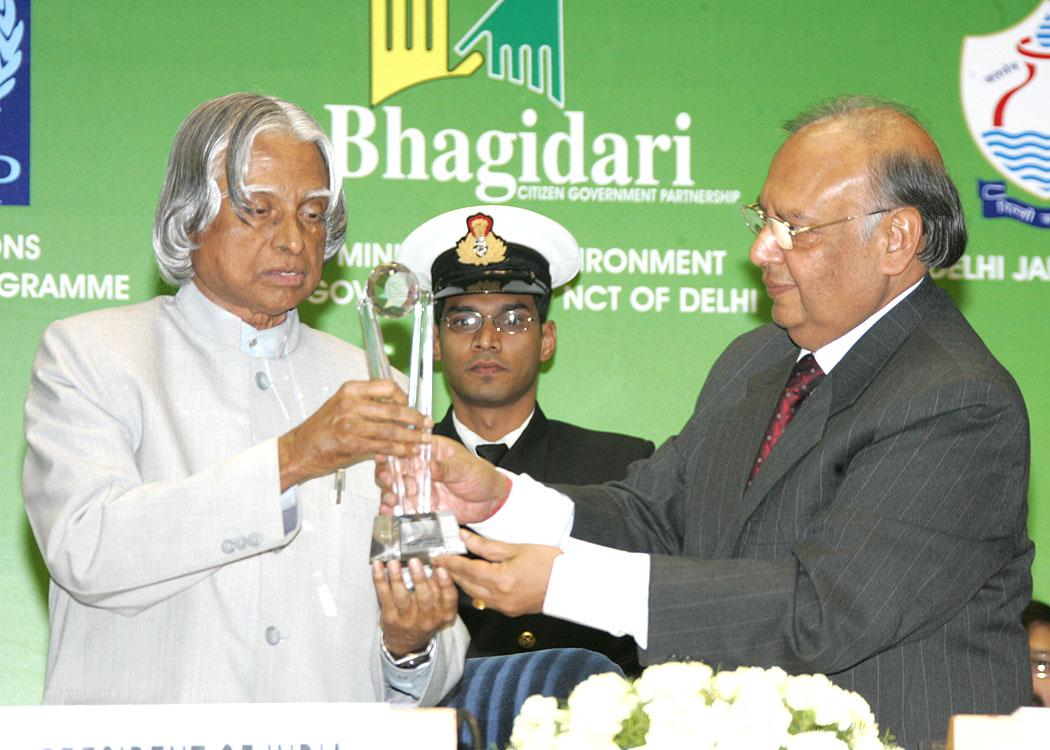Address At The Inauguration Of The International Conference On Environment-awareness-enforcement, New Delhi
New Delhi : 20-01-2006
Clean Environment is a Societal Mission
"The important thing is not to add
years to life, but add life to years"
I am indeed delighted to participate in the inauguration of the International Conference on Environment-Awareness- Enforcement. My greetings to Hon?ble Justices, legal luminaries, pollution control specialists, educationists, societal transformers, environmental planners and students. India is in a growth trajectory. Higher the growth in society, the magnitude of the pressure put on the environment proportionately increases. Our growth has to be sustainable and also must ensure that it does not make environment non-livable to the posterity.
Landmark Judgements on Environment
Whenever environment all around us, reaches a stage of high damage potential, timely intervention by courts will have a positive impact. This has been noticed in cases such as introduction of CNG operated automobiles, environment protection in Dehra Dun and closure of pollution intensive institutions particularly in residential areas. There are many judgements given which have had a positive effect on the environment. Judgements on Environmental protection by the Court of Law, alertness of official mechanism and the peoples participation in an integrated way will definitely bring in sustainable development with the environmental ethics embedded in the peoples way of life. I have come across during my recent visit to all the States in the country, including the rural areas, certain unique movement in the cleanliness and environmental protection which I thought of sharing with you.
Synergy Mission for Environmental Upgradation: The status of environmental cleanliness is one of the indicators of development of a nation. As a nation, we have to keep our environment clean and tidy including all our places of worship and rivers. I am delighted to learn the Kali Bein rivulet, the place where Gurunanak Devji is said to have received enlightenment. From the discussions, I understand that he organized people?s participation in stopping the massive flow of sewage into the Bein and cleaned 160 km long polluted and choked rivulet within the last three and a half years by deploying on an average 3000 volunteer pilgrims per day. Today one can feel the flow of fresh water in this rivulet released from the Tarkina Barrage by the government about a year ago. Over the years this rivulet has turned into weed choked drain. Recently river is clean due to the efforts of a social reformer Baba Balbir Singh Seechewal in partnership with the Punjab State Government. The revival of the rivulet has recharged the water table as the hand pumps that had become dry for the past 4 decades are now pumping out water. Baba Balbir Singh Seechewal had gone to all the factory owners in the area and requested them to ensure that they do not divert the water into Bein river. He has asked them to take it to a separate pit, helped them to treat the water and the fresh water was brought into the river. This was definitely a pro-active step by a social reformer in protecting the environment.
Activating the water bodies - Project Siruthuli: This is an initiative started by a group of social workers and officials of Coimbatore. This ecological project aims to bring back the glory of Coimbatore and its rich heritage. The project is represented by people from all walks of life and professionally organized. The primary focus is on large scale rain water harvesting and activating the water bodies afforestation, sewage/waste water treatment and solid waste management. The garbage and debris to the extent of over 26,000 cubic meters in one of the city?s largest tank have been removed. They have already standardized five of the nine primary tanks in Coimbatore for large scale rainwater harvesting. Over 600 saplings have been planted on the bunds of the desilted tanks and are being maintained. They are moving towards a target of planting 15 lakh trees. The comprehensive study has indicated outlet of the city sewage as 10 million litres per day. A pilot plant is being taken up for sewage treatment to treat one million litres per day. The treated water will be sold to the agriculturists and industrialists as a revenue earning measure. These are the major achievements for developing a growing city.
Integrated Zero Waste Management: Recently, I came across a total sanitation programme organized at Gandhi Nagar town Panchayat in Vellore district. Here the Panchayat authority in collaboration with non-government organization has been able to segregate the waste into organic and inorganic items. They have created men self help groups and women self help groups for managing the waste in the Panchayat. These groups have established roadside dustbins, which are being cleared regularly. They also have special services for hotels and marriage halls. The drainage system in the village is being cleared thrice in a week. The fault reporting system is so efficient that sanitation faults in the village are attended to and rectified within the same day. A village having two thousand four hundred families generates garbage of over 48 tones per year. This garbage is converted into manure and recyclable waste generating over Rupees three lakhs in revenue. All the two thousand four hundred families in the village are able to have a clean green village just by paying around ten rupees per month per family. The scheme provides employment to around thirty-six members who are paid employees of the Panchayat. Part of the funds required for the payment of these employees is generated by the sale of manure and recyclable waste. This appears to be a self-generating system and is economical. Many of the PURA complexes in the country may like to follow such examples for economic benefits and keeping the rural setting clean, tidy and disease free.
Keerapalayam Experience: In August 2004, I had visited Keerapalayam Panchayat in Cuddalore district, Tamil Nadu. When I was discussing with the Panchayat Board office-bearers, I found that every one of the thousand one hundred and twenty five dwelling units in the Panchayats had sanitary facilities. Also it was interesting to find that the women in the village had acquired masonary and plumbing skills and they had been responsible for constructing the household toilets. They not only constructed toilets for the houses in their Panchayats but also went to neighbouring villages and provided this facility on an entrepreneurial basis. This method has provided employment opportunities to the women and also enabled the Panchayat area clean, tidy and free from diseases arising out of poor sanitary conditions. Similarly effort has been reported from Tamarai Kulam Panchayat, Ramanathapuram District.
Electricity Generation from Municipal Waste: A serious problem has arisen both in rural and urban areas due to the accumulation of municipal solid waste. Efficient and environmentally clean disposal of garbage has always been a major technological challenge. While being a threat to the environment, mounting garbage is also a rich source of energy. The potential for converting this waste into useable energy, which will eliminate a major source of pollution, was realized by one of our innovative organizations- Technology Information Forecasting and Assessment Council of DST which helped in developing a completely indigenous solution for the processing of waste into a source of fuel. This fuel could, in turn, be used for generation of electricity through mini plants. Two entrepreneurs in Andhra Pradesh adopted the technology with refinement and established two independent plants in Hyderabad and Vijayawada generating over 6 megawatts of electricity each, which is being supplied to the State Grid. India needs thousands of mini power plants both in rural and urban areas using municipal waste. Now I would like to discuss the action needed to be taken in future for improving the environmental conditions.
Mapping the Neighbourhood by the children
Department of Science and Technology has taken up a programme called ?Mapping the Neighbourhood?. In Almora district in Uttaranchal children from 20 schools have been motivated to use mapping techniques to investigate and map basic socio-economic, environmental and ecological issues being faced by the neighbourhood community. Armed with the scientific and technological tools such as Global Positioning System (GPS), Geographic Information System (GIS), Space Imagery incorporated in the hand held computers, the children are creating maps with the neighbourhood details to improve their understanding of the immediate environment. These maps will enable further the technological community to find solutions for the regeneration of fast disappearing natural sources of water, improving road connectivity, finding better locations for electricity and water distribution points, reducing traffic congestion and improved systems of garbage collection. The children propose to extend their understanding to issues of agriculture and irrigation, health and nutrition and so on.
I am sure that this method of learning will restore the joy of discovery and invention by the children. Also, the mapping which the children are advised to do about garbage collection, garbage dumping and recycling will enable the municipal authorities to provide a clean environment. Also, since the children are involved even the elders will abide by the laws of the land more easily because of their love and affection.
Planning for Green Building Materials
The embodied energy in building materials is quite high. With energy consumption we also increase the pollution. Hence, it will be advisable to plan for green buildings at an affordable cost. While planning for Green Buildings in all the sectors of the economy, the availability of materials and equipment will become one of the major issue. Towards this objective, there will be a need to network with several manufacturers in India to create new products and news markets. A few green materials and equipment which are available in the country are: Fly-ash cement, Fly-ash block, Recycled Aluminum, Recycled steel, Recycled tiles, Low VOC (Volatile Organic Compounds) paints, Bamboo based products, high performance glass, energy efficient equipment & systems, HFC (Hydro Fluoro Carbon) based high efficiency chillers, Building Controls, Green Roof, Recycled wood, etc., However, there is a need to produce these green materials in large quantities required by the construction sector.
Energy Independence
India is in the developing pace which will need large amount of energy. As a long term policy India has to go for energy independence. The main features of energy independence is to increase the use of renewable energy like solar energy on large scale, establish large number of thorium based nuclear power plant and go for massive plantation of Jatropha which will lead to production of Bio-fuel for use in the automobile sector.
Renewable energy: Today, the prime motivation for us to consider the renewable energy alternatives to the fossil fuel, is the concern for our environment and the rising cost of economy. The recent trends in the uncontrolled increase in the cost of fossil fuels have almost nullified their economic advantage. Besides, the newer technologies such as CNT (Carbon Nano Tubes), will improve the efficiency of solar cells, the hydrogen fuel cells and many such green technologies economically very attractive as well. Rashtrapati Bhavan is considering generation of electricity from renewable resources to take care of its energy needs. One such proposal under consideration amongst many is the setting up of an 5 MGW Grid locked Solar Power Photovoltaic Plant occupying an area of 300 by 300 meters for supplying the entire Rashtrapati Bhavan Building complex including the estate. This solar plant apart from providing energy will reduce the dumping of certain quantity of carbon-di-oxide, sulfur oxide and nitrogen oxide which is normally emitted in the conventional thermal power plants.
While the world of science and technology is focusing on improving the efficiency of photo voltaic cells using nano technology through aligned CNTs to make economic sense of generation of Solar Photo Voltaic energy, many other avenues of using solar energy are also being attempted world over. One such route is to utilize the solar thermal. They use solar collectors intelligently to provide power for hot water and other heaters. In fact for lighting, fans, lifts air conditioners etc are from solar thermal. I consider the combination of the two systems may be even better than the generation of electricity from fossil fuel.
Nuclear Energy: Nuclear power generation has been given a thrust by the use of uranium based fuel. However there would be a requirement for a ten fold increase in nuclear power generation even to attain a reasonable degree of energy self sufficiency for our country. Therefore it is essential to pursue the development of nuclear power using Thorium, reserves of which are higher in the country. Technology development has to be accelerated for Thorium based reactors since the raw material for Thorium is abundantly available in our country. Also, Nuclear Fusion research needs to be progressed with international cooperation to keep that option for meeting the large power requirement, at a time when fossil fuels get depleted.
Bio-fuel generation: We have nearly 63 million hectares of wasteland available in the country, out of which 33 million hectares of wasteland have been allotted for tree plantation. Certain multi-purpose bio-fuel plants can grow well in wasteland with very minimum input. Once cultivated, the crop has fifty years of life. Fruiting can take place in these plants in two years.
Bio-fuel plants grown in parts of the waste land, for example, 11 million hectares, can yield a revenue of approximately Rs.20,000 crore a year and provide employment to over 12 million people both for plantation and running of the extraction plants. It will reduce the foreign exchange outflow paid for importing crude oil, the cost of which is continuously rising in the international market. The Bio-fuel is Carbon neutral. The oil can also be used for soap and in candle industries. De-oiled cake is a raw material for composting and the plantation is also good for honey production. We should absorb best of the technologies available worldwide and start commercial operation immediately. One time investment needed for bio-fuel plantation to production in 11 million hectares will be approximately Rs. 27000 Crores. The capital equipment and investment in plant and machinery can come from bank loans and private sector entrepreneurs. I have seen the progress in bio-fuel plant cultivation, preparation of seedlings, tissue culture and development of non-toxic hybrid varieties in Tamil Nadu Agricultural University, Coimbatore. They have also worked from processing of seeds to bio-fuel production by the indigenous design and development of bio-fuel plants. Anand Agriculture University at, Anand (Gujarat) has also made progress in the bio-fuel cultivation and processing in Gujarat. Bio-fuel plants can be grown in a number of states in the southern, western and central part of the country. Some of our States like Chhattisgarh and Mizoram have taken the initiative and have planted Jatropha on a large scale which will start yielding results in the next two years.
Conclusion: Clean habitat is my goal
Our Supreme Court has laid down "The Polluter Pays" principle. We are a developing country and certain percentage of people live below poverty line. Every citizen has a right to have a clean environment and we must ensure that the poor alone are not made to bear the brunt of environmental degradation. It is essential to uplift the citizens to the normal life with employment, habitat, healthcare and education. This will definitely have a positive impact on the environment. The civil society, NGOs and press have to take proactive action in the protection of environment through enforcement of environmental laws.
India has 38 lakh Bharat Scouts and Guides, 13 lakh NCC Cadets and large number NSS Volunteers and students. These enlightened disciplined youth can definitely be empowered to promote a clean habitat movement in their home and surroundings and participate in imparting the awareness amongst the rural and urban population leading to a clean nation. I would like to recall the oath I administered to the Uttaranchal youth who are concerned with the environment:
a) We will protect the fauna and flora of our region and make conservation reserves our sacred responsibility.
b) We will make India?s wildlife and natural environment the pride of our great nation.
c) We will forge genuine partnership among officials, local communities and NGOs to jointly manage our ecological resources.
d) We will harmonize the wisdom of traditional values with modern forest management measures.
This type of societal participation will lead to healthy environment and promote better performance and productivity in various tasks taken up by the people.
I inaugurate the International Conference on Environment- Awareness - Enforcement and my best wishes to all the participants in their mission of promoting a clean green environment for the nation along with its development goals.
May God bless you.

